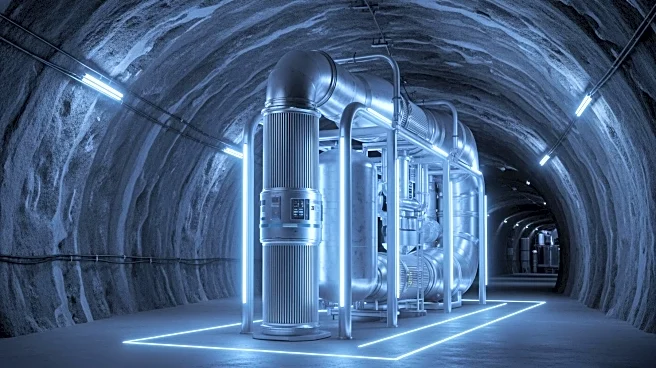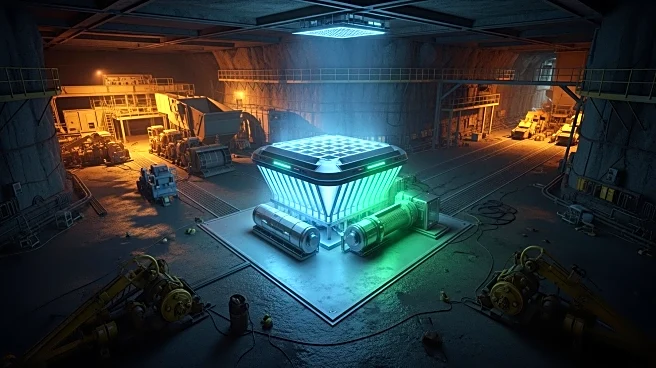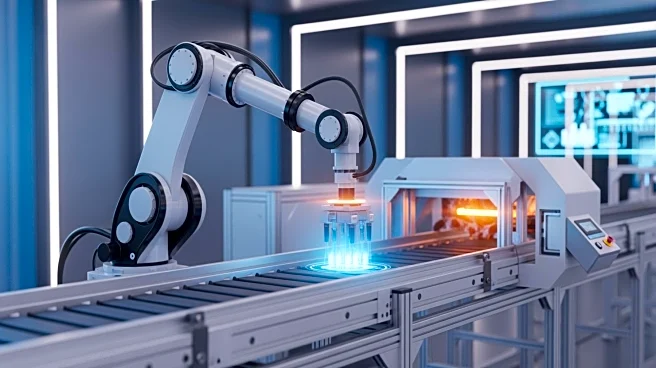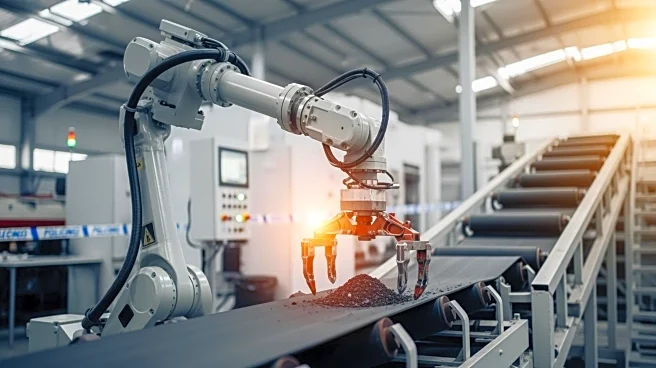What's Happening?
Codelco, Chile's state-owned copper mining company, in collaboration with innovation platform Ennomotive, has initiated a global challenge to address dust control in mining operations. The challenge seeks
innovative solutions to reduce airborne dust generated by the interaction between underground and open-pit mining at the Chuquicamata mine. Participants are invited to propose technologies that minimize human intervention, are energy autonomous, and can withstand extreme weather conditions. The initiative aims to improve air quality and reduce environmental impact, with proposals due by November 27, 2025.
Why It's Important?
The challenge highlights the ongoing environmental concerns associated with mining operations, particularly the impact of dust emissions on air quality and surrounding communities. By seeking global solutions, Codelco demonstrates a commitment to sustainable mining practices, potentially setting a precedent for other companies in the industry. Successful implementation of innovative dust control technologies could lead to improved health outcomes for workers and residents near mining sites, as well as enhanced operational efficiency. This initiative may also stimulate technological advancements in environmental monitoring and control systems.
What's Next?
Following the submission deadline, Codelco and Ennomotive will evaluate proposals and conduct field validation tests at the Chuquicamata mine. Successful solutions may be scaled up for broader application across Codelco's operations, potentially influencing industry standards for dust control. The challenge could attract interest from technology companies and research institutions, fostering collaboration and innovation in environmental management. As the mining industry faces increasing scrutiny over its environmental impact, Codelco's proactive approach may inspire similar initiatives globally.
Beyond the Headlines
The challenge raises ethical considerations regarding the balance between industrial activity and environmental preservation. As mining companies seek to reduce their ecological footprint, they must navigate complex regulatory landscapes and community expectations. The emphasis on minimal human intervention in proposed solutions also reflects broader trends towards automation in the industry, which may have implications for employment and workforce dynamics.











